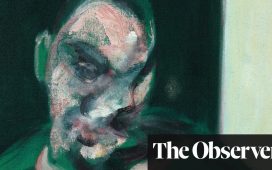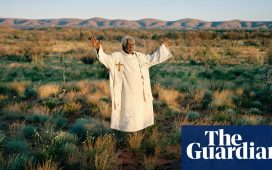In 1960s London, photographer Frank Habicht’s work captured the spirit and energy of the era, turning his skill to celebrities as well as the wider public to produce images that helped define a generation.
His ability to immortalise moments and capture the souls of his subjects made him a renowned figure in the world of photography. One of his most iconic works, Lost in a Dream – a tender portrait of Jane Birkin and Serge Gainsbourg in 1969 – has been praised as one of the most beautiful photographs of the couple ever taken.
Similarly, Girl at Rolling Stones Concert, taken in the 1960s, encapsulated the energy and freedom of the era – and decades later it became widely shared online with many people trying to figure out the identity of the mysterious woman.
Another notable image, featuring Vanessa Redgrave and Madame Lin Qui at a peace protest in London in 1968, resonates just as strongly today as it did when it was taken, reflecting Frank’s enduring commitment to peace, documenting social and political change.
Frank died on 8 October 2024 in the Bay of Islands, New Zealand, aged 85, beloved “Papa” to me and my musician brother Sebastian, and soulmate to our mother Christine for 55 years.
Born in Hamburg, Germany, in December 1938, Frank Habicht began his photography career in the early 1960s after studying at the Hamburg School of Photography. His work soon garnered attention across Europe, with publications in magazines such as Esquire, the Sunday Times, Metropolis and Twen. Frank’s photographs chronicled the faces and moments of the era, from Mick Jagger and the Rolling Stones to Vanessa Redgrave, Roman Polanski, Charles Aznavour, Jane Birkin and Serge Gainsbourg. His 1969 book Young London: Permissive Paradise is considered a collector’s item today and is held in prestigious institutions such as the Museum of Modern Art (MoMA) in New York.
English author Valerie Mendes wrote about Frank in Metropolis magazine in 1969: “London without her people would be dead indeed. Habicht finds not the clothes but the men and women who wear them; not the places, but those who live and work within the city. In the contrasting textures of skin and water, trees and hair, soft body curves against metal and stone, he traces an intricate pattern of London’s heart and its restlessness.”
My father would treat street children the same as he would treat the Rolling Stones, and vice versa, when taking photographs. And celebrities really responded to that, and often invited him to stay with them for the weekend.
Decades later, his work was included in the Strange and Familiar exhibition curated by Martin Parr, shown at the Barbican Centre and Manchester Art Gallery in 2016.
In 1981, Frank settled in New Zealand’s Bay of Islands, drawn by its beauty and tranquility. Here, he devoted much of his time to photographing the landscapes and communities of the region. His works, including Bay of Islands: Where the Sunday Grass is Greener and Bay of Islands: A Paradise Found, reflect his deep connection to his adopted homeland where his subjects included Dame Whina Cooper, Friedensreich Hundertwasser, Queen Elizabeth II at Waitangi Day celebrations and protests, and the unique life in the Far North.
In his later years, Frank’s final published work, As It Was, became a poignant, extensive reflection on his life in London in the 1960s.
This year, I began interviewing my father for a book to inspire young photographers.
“My camera became an extension of myself, a partner in my journey to capture the essence of my surroundings,” Habicht told me, summing up his relationship with his craft.
“You don’t need expensive gear to take memorable photographs. To be honest, I hardly knew how to use studio lights and always preferred shooting with natural light, especially on my London rooftop,” he said.
My father was deeply guided by the Sioux Native American quote, “With all beings and all things, we shall be as relatives,” a philosophy that shaped his perspective in both life and art.
He often spoke of his love for film photography, a medium he remained loyal to through out his career.
“I still prefer to shoot with film. It makes every captured moment precious,” Frank said.
Reflecting on his personal life, he shared: “The quirky girl in the photo [Till Death Do Us Part] happens to be my dear wife Christine. We met at a New Year’s party in London on December 31, 1969, on the very last day of the 60s. Since then it has been an everlasting love affair.”
Even in his final years, Frank’s heart remained in the 1960s.
“It is a surreal thought that my images will outlive me, but I’m happy knowing they’ve touched so many.”








